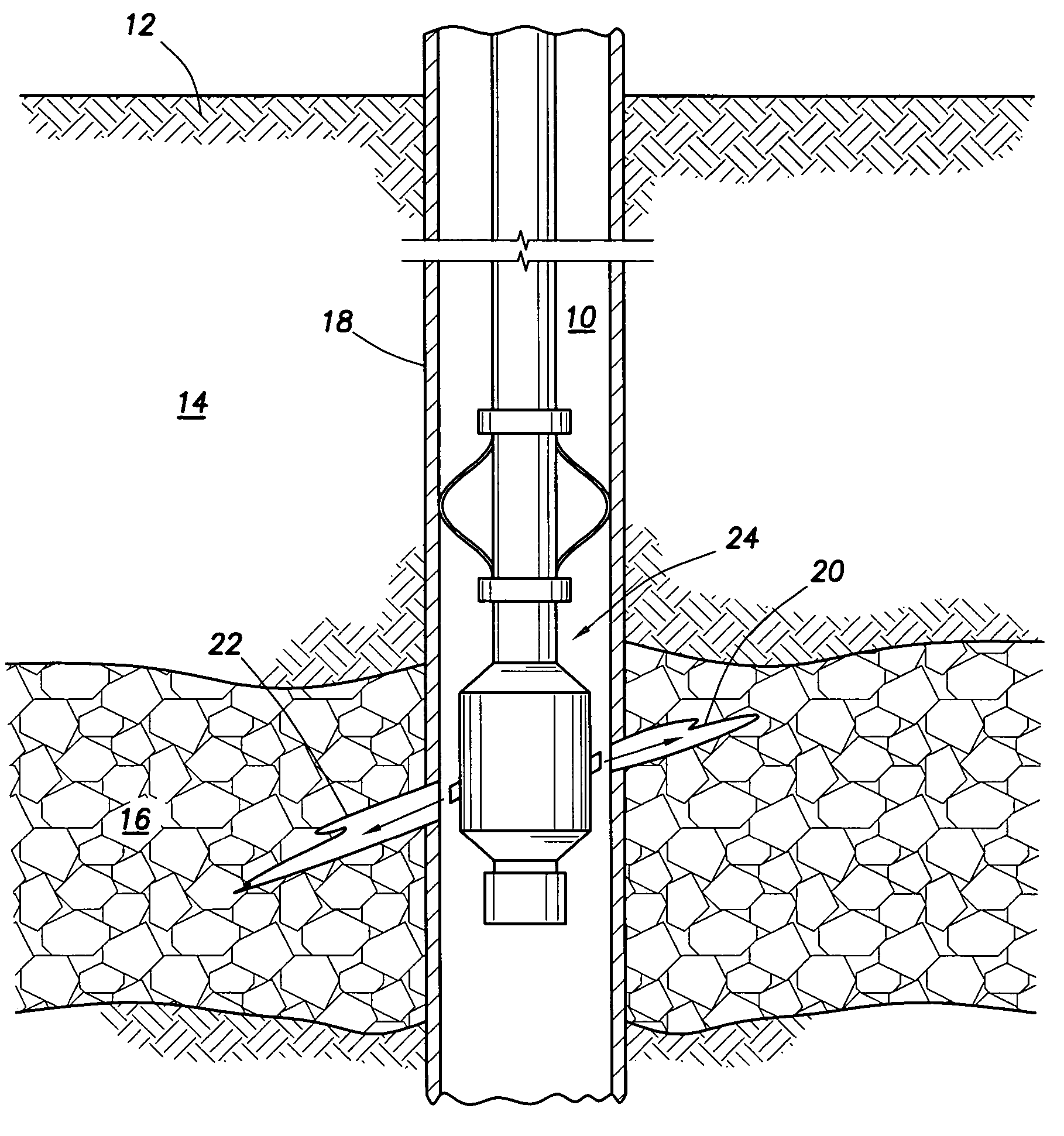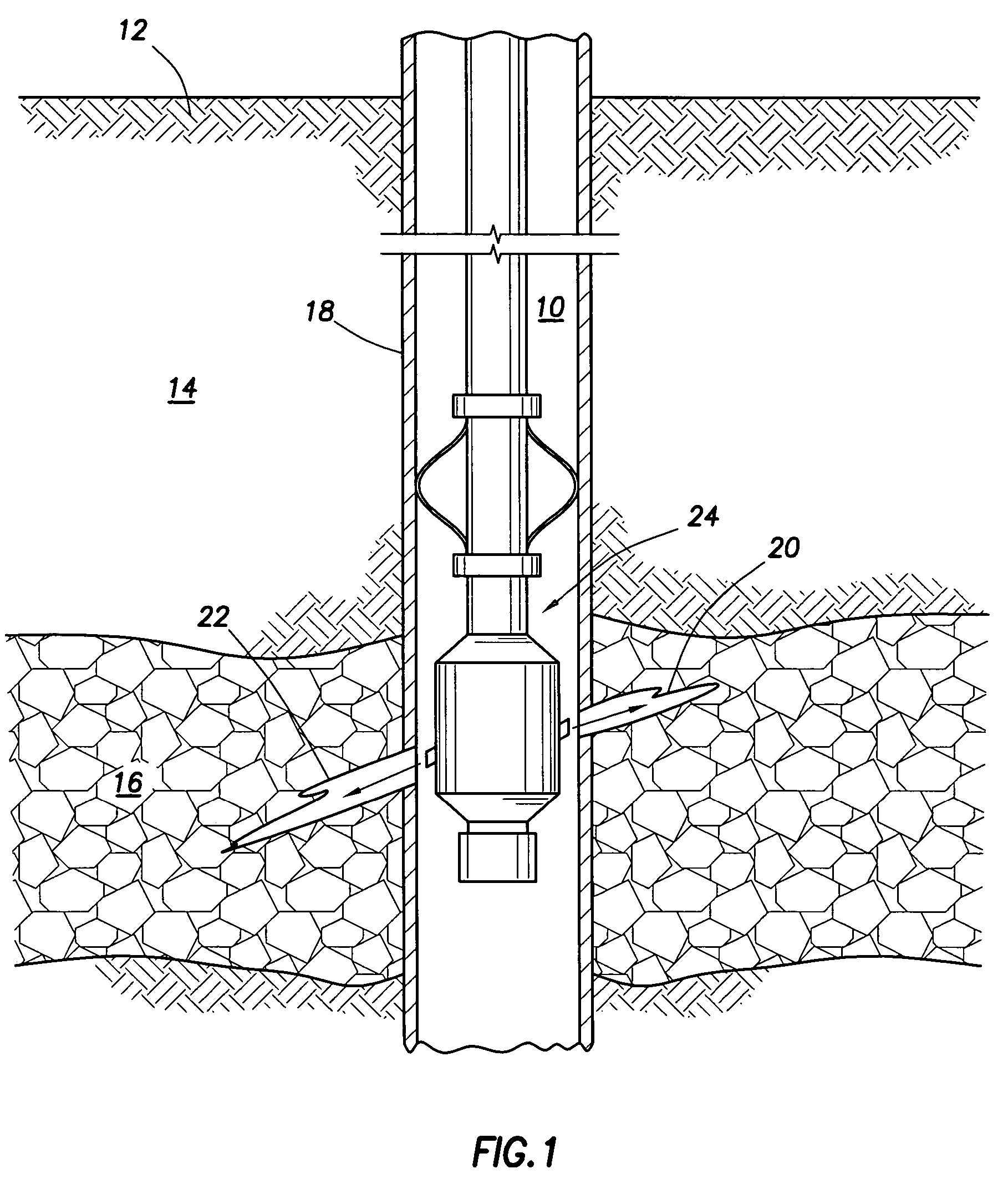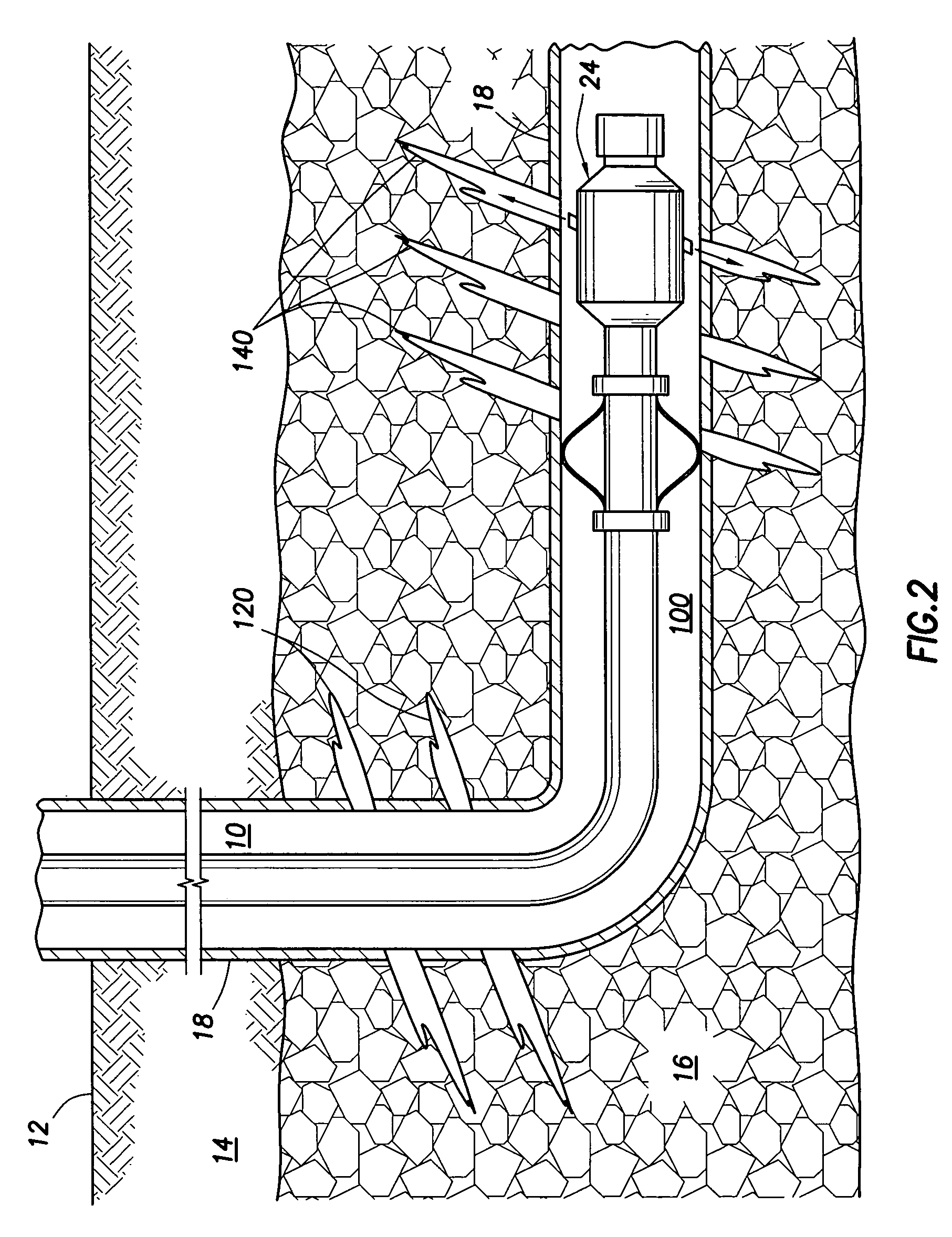Method of optimizing production of gas from vertical wells in coal seams
a technology of vertical wells and coal seams, applied in the field of subterranean well construction, can solve the problems of difficulty in initiation, difficulty in fracturing coal seams, and difficulty in magnitude, so as to maximize interference, enhance gas production, and maximize the effect of interferen
- Summary
- Abstract
- Description
- Claims
- Application Information
AI Technical Summary
Benefits of technology
Problems solved by technology
Method used
Image
Examples
Embodiment Construction
[0017]The present invention relates generally to subterranean well construction, and more particularly, to improved methods for producing gas from subterranean formations that include coal seams. FIG. 1 depicts initial steps of an exemplary embodiment of the present invention. At least one substantially vertical well is drilled into a subterranean formation such that each substantially vertical well bore intersects with one or more coal seams. An exemplary substantially vertical well bore 10, shown in FIG. 1, is drilled from the surface 12 through subterranean formation 14 using prior art techniques. Subterranean formation 14 includes coal seam 16, which is the source of a gas.
[0018]The number of substantially vertical well bores needed to maximize gas recovery from the coal seam 16 will depend on several factors, including, but not limited to, factors such as the characteristics and limitations of the site, subterranean formation, and coal seam. In particular, the permeability of t...
PUM
 Login to View More
Login to View More Abstract
Description
Claims
Application Information
 Login to View More
Login to View More - R&D
- Intellectual Property
- Life Sciences
- Materials
- Tech Scout
- Unparalleled Data Quality
- Higher Quality Content
- 60% Fewer Hallucinations
Browse by: Latest US Patents, China's latest patents, Technical Efficacy Thesaurus, Application Domain, Technology Topic, Popular Technical Reports.
© 2025 PatSnap. All rights reserved.Legal|Privacy policy|Modern Slavery Act Transparency Statement|Sitemap|About US| Contact US: help@patsnap.com



